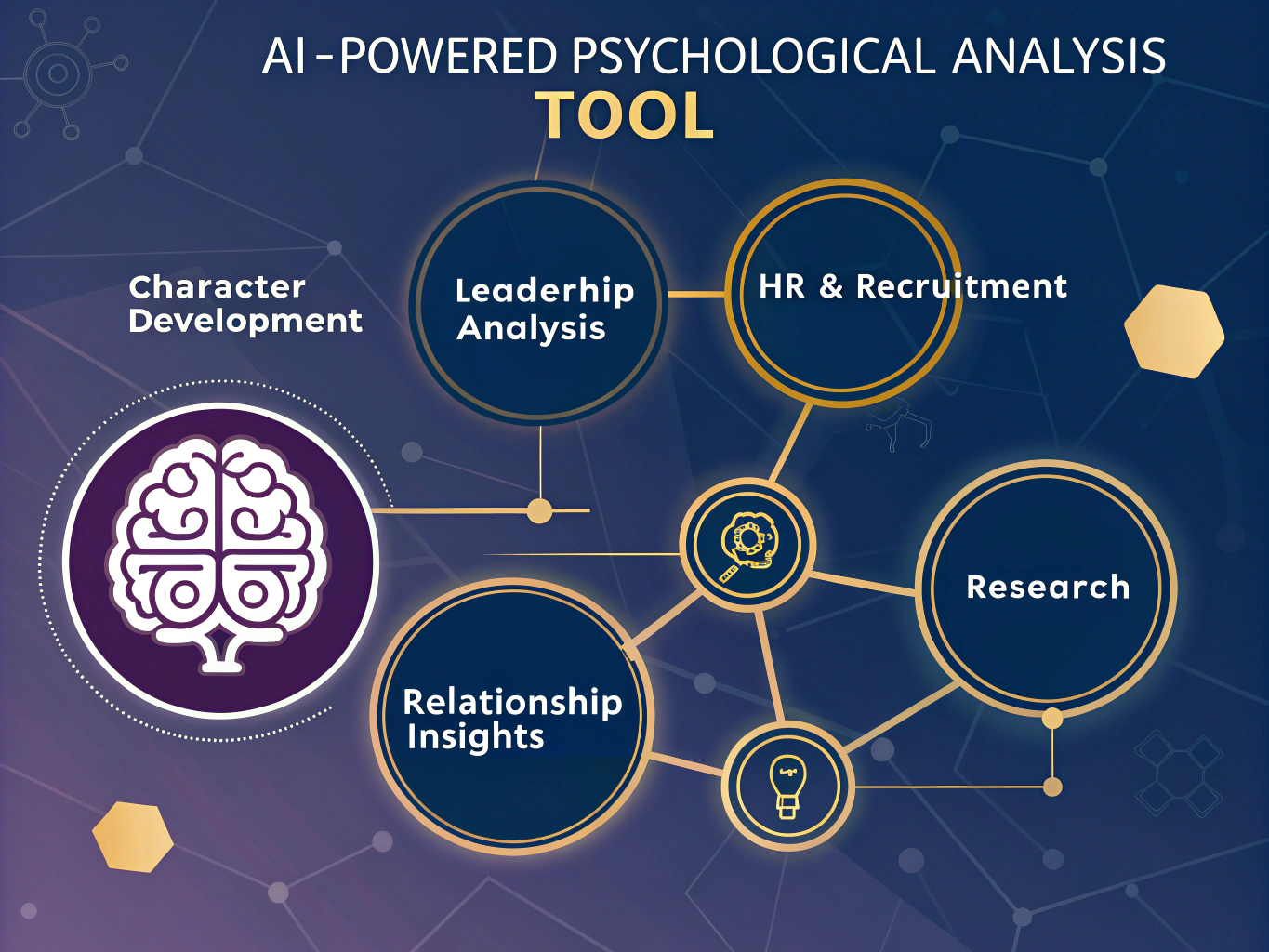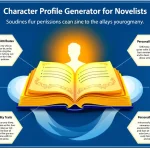Is this tool helpful?
How to Use the Psychological Analysis Tool Effectively
Follow these steps to get the most accurate and insightful psychological assessment from the AI-powered analysis tool:
- Identify the Individual: Enter the person’s name or a brief description in the first field. For instance, you might input “Michael Taylor, Marketing Director at BrightFuture Corp” or “Lena, protagonist in a historical drama novel.”
-
Provide Detailed Behavioral Information: In the second field, add thorough details about the individual’s language, responses, or behavior. Example inputs include:
- “Michael often emphasizes teamwork, using phrases like ‘we succeed together’ and shows steady eye contact during presentations.”
- “Lena tends to avoid confrontation, responding with indirect answers such as ‘I’ll consider it’ and often pauses before speaking.”
- Submit the Information: Click the Analyze Psychological Profile button once both fields are filled to start the AI-driven analysis.
- Review the Analysis: Examine the generated report carefully. The AI provides an overview and detailed bullet points illuminating key personality traits and behavioral insights.
- Save or Share Results: Use the copy function to easily transfer the analysis to other documents or share with colleagues or collaborators for further discussion.
What the Psychological Analysis Tool Is and How It Benefits You
The Psychological Analysis Tool uses advanced artificial intelligence to examine text-based information about a person’s language, behavior, and responses. It helps you uncover hidden personality traits, motivations, and behavioral patterns that are often hard to detect through casual observation.
By leveraging psychological theories and linguistic analysis, this tool delivers in-depth profiles that assist in understanding individuals more thoroughly—whether they are real people, fictional characters, or historical figures.
Key Benefits of the Tool
- Insightful Personality Profiles: Reveals key traits and thought processes using detailed linguistic and behavioral clues.
- Efficient and Fast: Saves time by automating complex psychological interpretations in seconds.
- Unbiased Analysis: Offers objective perspectives free from human prejudices or assumptions.
- Wide Range of Applications: Supports personal growth, leadership development, character creation, and more.
- Continuous Improvement: Incorporates the latest psychological research to refine its assessments over time.
Practical Uses of the Psychological Analysis Tool
1. Improving Character Depth for Writers
Writers can create authentic, complex characters by analyzing dialogue, actions, and behavioral cues. For example, consider a character description:
Name: Olivia Pierce
Description: Olivia speaks reluctantly, avoids direct eye contact in group settings, and frequently questions her decisions aloud. She often reflects on past failures with a tone of regret.
The tool’s analysis might highlight Olivia’s insecurity, tendency toward self-doubt, and potential for growth, helping writers craft realistic character arcs.
2. Enhancing Leadership and Team Understanding
Managers and team leaders can analyze communication styles and behaviors to improve team cohesion. For example:
Name: Raj Patel, Project Manager
Description: Raj frequently uses inclusive language such as “our goals” and “we will,” maintains positive tone even under stress, but rarely addresses conflicts directly.
This insight could guide Raj to adopt more transparent conflict resolution strategies and foster stronger team trust.
3. Supporting Psychological and Social Research
Researchers can use the tool to analyze interview transcripts, case studies, or historical records, generating hypotheses or fresh interpretations based on language patterns and behavior.
4. Strengthening Personal Relationships
Individuals looking to understand themselves or loved ones better can benefit from the tool’s ability to reveal underlying motivations and emotional states, which can improve communication and empathy.
How the AI-Powered Psychological Analysis Tool Works
This tool uses natural language processing and psychological frameworks to interpret the text input you provide. It compares observations to established personality models such as the Big Five traits and cognitive-behavioral patterns. Linguistic cues such as word choice, tone, and sentence structure help the AI infer emotional states, motivations, and potential behaviors.
By synthesizing these elements, the tool produces a detailed psychological profile that explains key personality characteristics and behavioral tendencies.
Psychological Theories and Techniques Incorporated
- Big Five Personality Traits (Openness, Conscientiousness, Extraversion, Agreeableness, Neuroticism)
- Cognitive Behavioral Patterns
- Behavioral Analysis Frameworks
- Linguistic and Communication Analysis
- Emotional Intelligence and Motivational Factors
Frequently Asked Questions (FAQ)
Q1: How detailed should my input be for the best analysis?
Provide clear and specific descriptions of the person’s language, behavior, and context. The more detailed your input, including direct quotes and observed actions, the more precise and insightful the analysis will be.
Q2: Can I analyze fictional characters or historical figures?
Yes. The tool works well with fictional characters and historical figures by analyzing the available textual information, such as dialogue, biographies, or historical accounts. Detailed context improves accuracy.
Q3: Is this tool a replacement for professional psychological evaluation?
No. This tool provides helpful preliminary insights but does not replace clinical assessments conducted by licensed professionals.
Q4: Can this tool help improve my leadership skills or teamwork?
Yes. Analyzing behaviors and communication styles can reveal strengths and areas for improvement, helping you develop more effective leadership and collaboration techniques.
Q5: How do cultural differences affect the analysis?
The AI considers cultural context when provided. Including relevant cultural background in your input enhances the accuracy of the psychological profile.
Important Disclaimer
The calculations, results, and content provided by our tools are not guaranteed to be accurate, complete, or reliable. Users are responsible for verifying and interpreting the results. Our content and tools may contain errors, biases, or inconsistencies. Do not enter personal data, sensitive information, or personally identifiable information in our web forms or tools. Such data entry violates our terms of service and may result in unauthorized disclosure to third parties. We reserve the right to save inputs and outputs from our tools for the purposes of error debugging, bias identification, and performance improvement. External companies providing AI models used in our tools may also save and process data in accordance with their own policies. By using our tools, you consent to this data collection and processing. We reserve the right to limit the usage of our tools based on current usability factors.







